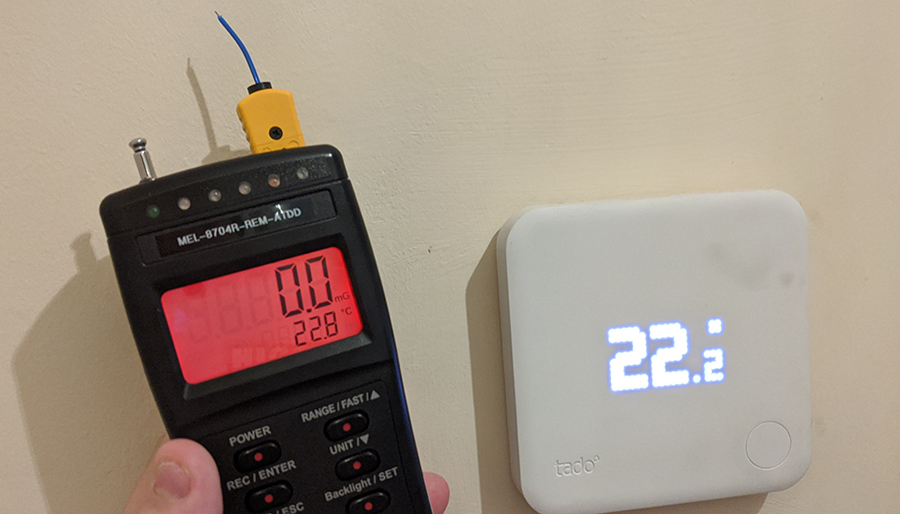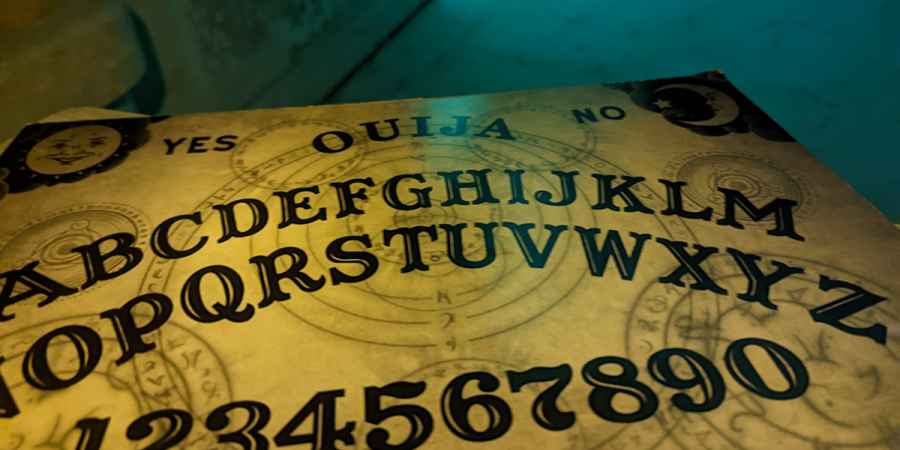Testing Accuracy Of The Mel Meter Paranormal Multimeter
By Steve Higgins
December 01, 2020
December 01, 2020


This page is more than four years old and was last updated in March 2024.
The Mel Meter is a paranormal multi-tool designed by Gary Galka, a name that may be familiar to some as Gary occasionally appears on the long-running US ghost hunting show, 'Ghost Adventures'. He invents paranormal investigation tools for Zak Bagans and the rest of the show's team.
The device is named after Gary's late daughter, the word Mel is short for Melissa. There are a few different versions of the Mel Meter, but they all have an EMF meter and a sensitive ambient air temperature measurement built in. These are the device's core functions and are switched on by holding down the 'power' button.
The exact model we are testing is the MEL-8704R-REM-ATDD. As the model number suggests, it also has REM-Pod and ATDD functionality built in. The inclusion of these two additional features make the Mel Meter great value for money, as it costs around the same as a stand alone REM-Pod.
To get a feel for how reliable a Mel Meter is on an investigation, we put it through its paces in a controlled environment.
EMF Meter

The Mel Meter's main feature is the EMF meter. When powered on the current electromagnetic field strength is displayed on the screen in milligauss (mG).
I tested the Mel Meter by putting it next to a microwave oven and comparing it with other devices that can detect EMF, including the popular K-II meter and an EDI+ meter.
When placed in front of the microwave, the Mel Meter gave a reading of 30.5mG. The two K-II meters maxed out and said the microwave was kicking out more than 20mG (this is their limit), while the EDI+ gave a reading of 11.9mG.
So, three of the four devices thought the strength of the field was at least 20mG, including the Mel Meter which gave the highest reading. I think this reading is fairly accurate. The EDI+ was way lower than the other three devices so it should be discredited, while the K-IIs both maxed out and failed to show the true reading.
The Mel Meters does have a wider range of sensitivity, which could account for the higher reading. Its makers claim it can detect electromagnetic frequencies as low as 20Hz, where as 50Hz is a K-II's lower limit. It's hard to know exactly how accurate the Mel Meter is, but it is at least very responsive, and let's be honest - most casual ghost hunters don't really care what the actual strength of the field is in milligauss.
Advertisement ‐ Content Continues Below.

I tried to affect the Mel Meter's EMF reading using various transmitting devices, I found that a mobile phone failed to trigger the device even when it was making a call. This means that the Mel Meter isn't as susceptible to radio interference in the same way a K-II meter is. My walkie talkie also didn't trigger the EMF sensor when used in proximity of the device.
However, I was able to get the EMF meter to register a change when I used a wireless microphone near it, the kind used by television film crews. Although the transmitter had to be very close to the Mel Meter in order to get a reaction and at this distance it would be clearly visible what was causing it to trigger.
REM-Pod

The biggest upgrade to the new model of the Mel Meter is the inclusion of a REM-Pod. These are usually stand-alone devices that emit a static electric field from an antenna. If something enters that field then the device can detect its proximity and alert the user to it using a series of five lights on the top of the device and an audible tone.
The Mel Meter's REM feature can be switched on using a push button underneath the flip-out stand on the back of the device. When activated the first light on a bar of six at the top of the device lights green - the other five light up different colours to indicate proximity. It should be noted that the REM can work independently from the rest of the device. You can keep the device turned off if you wish and just use the REM function.
I compared the Mel Meter side-by-side with a REM-Pod and the two behaved almost exactly the same, both were as sensitive to objects passing into their field. Having used both a REM-Pod and Mel Meter a fair amount, I have to say they are quite robust and hard to get to trigger incorrectly.
The device's instructions state that the REM can be triggered by fluorescent lights and high power handheld communication devices, such as walkie talkies. I tested this using a mobile phone in various states, including while making a call, the device didn't trigger at all, however a walkie talkie in close proximity did make the device trigger.
One important thing to remember with the REM-Pod is that when something passes into its field and triggers it, but stays inside the field, after seven seconds the device will reset and the tone will cease. However if that same object moves out of the field, this will also affect the field and result in the device triggering.
There is a button on the side of the device, 'REM zero', which will manually reset the device should it persistently alert when something enters its field. There's also a range button, pressing it will adjust the REM-Pod's sensitivity through five different levels which are indicated on the lights at the top of the front panel.
The REM-Pod is best used when the device is placed on a flat surface, the flip-out stand makes it perfect for this function. If the device triggers after placing it on a surface, simply use the 'REM zero' button to reset it. The Mel Meter can be used as a handheld device, but it's recommended to keep your hand low on the device to avoid interfering with the REM function. Again you can 'zero' the device after taking hold of it to reset it.
Temperature Sensor

The Mel Meter has a built in temperature sensor, unlike other similar devices the temperature probe plugs into the top of the device. Having an external probe makes the device's temperature reading far more accurate than any similar devices. After taking it out of a kit bag and turning it on, the temperature reading stabilises and reasonably accurately displays the ambient temperature in the room after just a few seconds. The temperature reading can be switched between centigrade and fahrenheit.

The Mel Meter is also really responsive to temperature changes. When I tested the EDI+ Meter, after 20 minutes in a fridge, the EDI+ only dropped from around 22°C to 19.4°C, however the Mel Meter with its external probe took just two minutes to drop to 6.7°C - a pretty accurate reflection of the temperature of the inside of a fridge that's just been opened.
ATDD

Another new feature in this model of Mel Meter is the Ambient Temperature Deviation Detection (ATDD) circuit. Like the REM-Pod, this is turned on from the back of the device and can be used without the main device being powered on. However, the ATDD will not work unless the REM-Pod is also switched on.
The ATDD function will alert you to sudden changes in temperature of +/- five degree via an audible tone and a light on the side of the device. The pitch of the tone indicates the change, a higher pitch for a temperature rise and a lower pitch for a drop. The light helps distinguish between the two tones, with a blue light for a downward drop or red for a rise.
Near the light on the side, there's also the 'ATDD zero' button, which can be pressed to reset the device should you need to after moving the device into a room or area with a different temperature. Just like the main temperature sensor on the device, the ATDD feature is also very responsive, accurate and useful.
Conclusion
Of all the paranormal devices I have tested, the Mel Meter is probably the most accurate EMF meter and thermometer I've seen. Both features give pretty stable and realistic readings, this is also true of the ADTT feature which can alert you to changes in the ambient air temperature.
The REM-Pod feature is also well worth having. It's not prone to false positives and often won't trigger on an investigation, which I think is a good thing, because it is very responsive to something moving within its field.
Reviews Of Similar Gadgets
See All
ArrayJuly 19, 2022
How To REALLY Get To The Bottom Of EMF On A Ghost Hunt

ArrayMarch 24, 2022
How To Build An EM Pump
Further Reading
Dive into the world of the paranormal and unexplained with books by Higgypop creator and writer Steve Higgins.

Investigating The Unexplained
Practical advice on conducting paranormal investigations and uncovering the unexplained.
Buy Now
The History & Mystery Of Parapsychology
A deep dive into paranormal phenomena, exploring history, science, and psychology.
Buy NowMore Like This

Ghost HuntingJanuary 26, 2025
These Are The Ghost Hunting Gadgets You Should Avoid If You Want To Be Taken Seriously As An Investigator

GamesDecember 09, 2024
Poltergeist Quiz

GamesDecember 08, 2024
Ouija Board Trivia Challenge

GamesDecember 04, 2024
Fakes, Hoaxes & Debunked Paranormal Claims Quiz
 See More on Audible
See More on Audible


Comments
Want To Join The Conversation?
Sign in or create an account to leave a comment.
Sign In
Create Account
Account Settings
Be the first to comment.